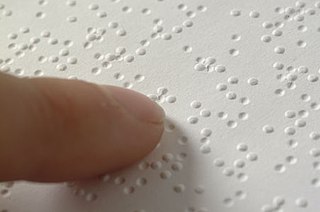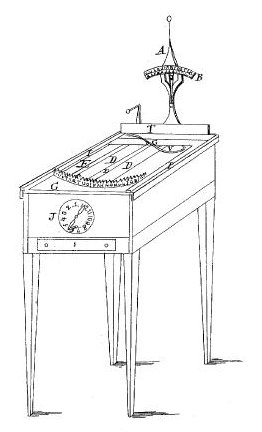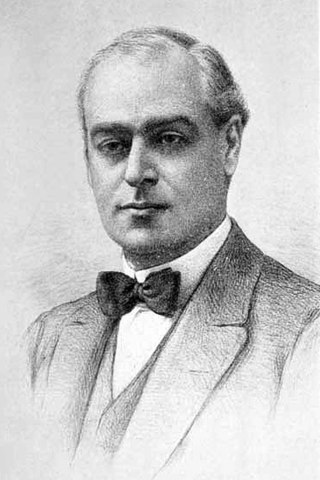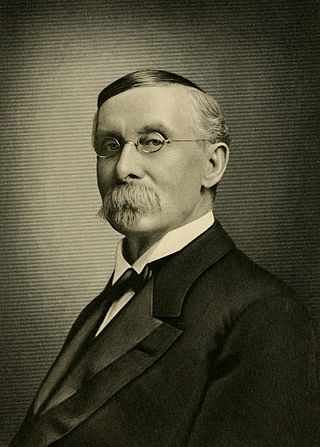Related Research Articles

Braille is a tactile writing system used by people who are visually impaired, including people who are blind, deafblind or who have low vision. It can be read either on embossed paper or by using refreshable braille displays that connect to computers and smartphone devices. Braille can be written using a slate and stylus, a braille writer, an electronic braille notetaker or with the use of a computer connected to a braille embosser.

Louis Braille was a French educator and the inventor of a reading and writing system, named braille after him, intended for use by visually impaired people. His system is used worldwide and remains virtually unchanged to this day.
Perkins School for the Blind, in Watertown, Massachusetts, was founded in 1829 and is the oldest school for the blind in the United States. It has also been known as the Perkins Institution for the Blind.

The subject of blindness and education has included evolving approaches and public perceptions of how best to address the special needs of blind students. The practice of institutionalizing the blind in asylums has a history extending back over a thousand years, but it was not until the 18th century that authorities created schools for them where blind children, particularly those more privileged, were usually educated in such specialized settings. These institutions provided simple vocational and adaptive training, as well as grounding in academic subjects offered through alternative formats. Literature, for example, was being made available to blind students by way of embossed Roman letters.

Christopher Latham Sholes was an American inventor who invented the QWERTY keyboard, and, along with Samuel W. Soule, Carlos Glidden and John Pratt, has been contended to be one of the inventors of the first typewriter in the United States. He was also a newspaper publisher and Wisconsin politician. In his time, Sholes went by the names C. Latham Sholes, Latham Sholes, or C. L. Sholes, but never "Christopher Sholes" or "Christopher L. Sholes".

The Perkins Brailler is a "braille typewriter" with a key corresponding to each of the six dots of the braille code, a space key, a backspace key, and a line space key. Like a manual typewriter, it has two side knobs to advance paper through the machine and a carriage return lever above the keys. The rollers that hold and advance the paper have grooves designed to avoid crushing the raised dots the brailler creates.

The typographer was an early typewriter invented by William Austin Burt. Intended to aid in office work, the machine worked by using a lever to press characters onto paper one at a time. Perhaps because of its slow speed, or because there was not yet a wide market for typewriters, it was not a commercial success.
Frederick George Creed was a Canadian inventor, who spent most of his adult life in Britain. He worked in the field of telecommunications, and is particularly remembered as a key figure in the development of the teleprinter. He also played an early role in the development of SWATH vessels.

Sir Cyril Arthur Pearson, 1st Baronet,, was a British newspaper magnate and publisher, best known for founding the Daily Express.

Sabriye Tenberken is a German tibetologist and co-founder of the organisation Braille Without Borders.
Caryn Linda Navy is an American mathematician and computer scientist. Blind since childhood, she is chiefly known for her work in set-theoretic topology and Braille technology.

Frank Haven Hall was an American inventor and essayist who is credited with inventing the Hall braille writer and the stereographer machine. He also invented the first successful mechanical point writer and developed major functions of modern day typography with kerning and tracking.

A braille e-book is a refreshable braille display using electroactive polymers or heated wax rather than mechanical pins to raise braille dots on a display. Though not inherently expensive, due to the small scale of production they have not been shown to be economical.
Evelyn Berezin was an American computer designer of the first computer-driven word processor. She also worked on computer-controlled systems for airline reservations.

J. Robert Atkinson was the founder of the Universal Braille Press in 1919 in Los Angeles, later known as the Braille Institute of America, and published the first Braille edition of the King James Version of the Bible, among other books. Atkinson became an innovator and advocate for the blind, working to enable the sight-impaired to lead normal lives.
Josephine Ethel "Josie" Wood was a South African educator, co-founder of the South African Library for the Blind and the South African National Council for the Blind.

Lucille Armistead Goldthwaite was an American librarian who specialized in books for blind readers.
Isabelle Lyon Dean Grant was a leader of the blind civil rights movement and worked to improve education for blind children around the world.
Georgia Marie Griffith was an American deafblind educator, author, and online community pioneer. Griffith began her career as a music educator. When her hearing deteriorated as an adult, she worked for the Library of Congress translating music into braille. At age 50 Griffith became an early adopter of the Internet, managing message forums for CompuServe and providing assistance to people with disabilities in using computers.
Gerrit van der Mey was a deafblind Dutch mathematician. He helped create software for PTERA and ZEBRA, some of the first computers designed in the Netherlands, as well as creating compilers for later computers. In 1982 he was made a member of the Order of Orange-Nassau at the grade of knight.
References
- 1 2 McLeRoy, Sherrie S. (2015-01-12). Texas Women First: Leading Ladies of Lone Star History. Arcadia Publishing. ISBN 9781625852403.
- ↑ "NDEAM DISABILITY HISTORY MONTH FACTS (2011-2014): 2011 Daily Facts" (PDF). The Office of the Texas Governor.
- ↑ "A Guide to the George F. Townsend Papers, 1853-1952". www.lib.utexas.edu. Retrieved 2017-11-05.